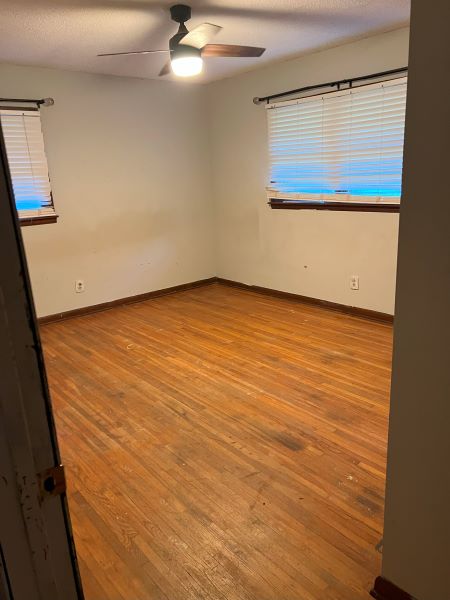
This post is from new Careful Cents contributor Kayla, who owns the blog ShoeaholicNoMore. Over the next six months she’s documenting her journey to quitting her job and taking the leap into self-employment.
Resigning from my very secure, but very boring, full-time job is something I’ve been thinking about constantly for the past few months, ever since I started freelancing online in July 2014. But before I talk about how to quit your job with grace and not burn bridges, let me back up a little bit and introduce myself.
I’m Kayla, a full-time credit analyst at an agricultural lender in rural Kansas, a part-time retail employee, and an almost full-time freelance writer and virtual assistant. I started my blog in December 2013 to help me stay accountable as I worked my way out of debt.
Then in July 2014, I got my first two freelance writing jobs. Yes, you read that right. I basically have two full-time jobs and a part-time job. I say “almost full-time freelancer” because that’s the direction I’m headed in but I haven’t quite reached my goal yet.
I’ve been working hard the past few months as a freelance writer and virtual assistant to help pay off my consumer debt. When I first started, I solely thought of this venture as a side hustle. I knew several bloggers who supported themselves and their families by working solely as a freelancer, but that wasn’t my intention.
I just wanted to earn a little extra money to get my debt paid off. Plus, I loved that people were paying me to do two things I love: write and manage their websites.
Fast forward to today and now I’m trying to determine when I’ll take the plunge, and quit my 8-5 job, to focus solely on my freelance business. After going back and forth several times, my quitting date is June 1, 2015, despite the fact that I won’t be free from all my debts yet.
Timing is Everything
Deciding when to quit your full-time job is only part of the equation. As I’m on my journey toward full-time self-employment, my situation is complicated by the fact that I don’t plan to leave my part-time job right away. Instead, I’d like to take on a few more hours at my part-time job to help make ends meet as I continue to build up my freelance business.
In addition to turning in my resignation at least 30 days in advance at my full-time job, I also need to make sure the manager at my part-time job is aware that I hope to take on more hours. Typically the retail store where I work hires a new employee to start in mid-May.
My timing needs to be flawless so I don’t have a huge income loss, as I make this transition to self-employment. As you set your quitting date and begin to determine the details for when and how you’ll quit your job, it’s important to know that timing is everything.
Here’s how I plan to quit my job and make sure things go smoothly for everyone involved.
Step 1: Talk to Your Boss
Talk to your boss as soon as possible, so you give them plenty of time to make a smooth transition. I had a chat with my retail manager very early on to see if increasing my hours was even a possibility. She is very receptive to me working more hours there after my resignation, and is very sensitive to the fact that this needs to stay hush-hush as I haven’t given notice at my full-time employer yet.
Having that income to help makes ends meet is a crucial part of my plan. The income from that job isn’t large, but a few hundred dollars each month will make a big difference as I continue to build manage the inconsistent income and risk that comes with a freelance business.
Step 2: Prepare for Inconsistent Income
Self-employment income is varies from month-to-month and I want mine to be consistently high enough to cover at least my bare-bones budget before I resign from my full-time job. My business and income has been building each month, but as we’ve all heard, freelancing can be “feast or famine”.
With this in mind, I’ve been putting lots of extra toward my debt and building my emergency fund, and I will continue to do so up until I quit my full-time job. What steps do you need to take to prepare for this feast and famine cycle of self-employment?
After I resign, I’ll probably make conservative payments on my debt and put most of the extra money I earn into my emergency fund so I have a nice buffer in case I ever fall short of my monthly income goal. I’m also confident that with more hours freed up, because of quitting my full-time job, I’ll be able to continue to grow my freelance business quickly.
Step 3: Turn in Your Resignation Notice
The first step when quitting your job is of course, to let your boss or manager know, but then you have to follow through with an actual resignation notice. I have to turn in my resignation notice at least 30 days before my final work date.
So this means I need to have my resignation letter written and turned in by May 1st. If you aren’t sure of the exact process for quitting, check with your HR department or review your employee contract, to make sure you follow the steps correctly. You don’t want there to be any bad blood when you leave your job.
How to Quit Your Job Gracefully
Resigning from your job can be a pretty sensitive issue. The last thing you want to happen is to have your employer find out from somewhere else that you’re planning to resign.
This can lead to you being fired before you’re really ready to do so. Therefore, you want to make sure you use proper etiquette when you get ready to resign from your job. Here’s how to quit your job gracefully.
- Be discreet and don’t blab. You should always tell your employer or supervisor you’re resigning before you tell your co-workers or anyone in the general public. In my case, the only person I’ve told about my plan to resign is the manager at my part-time job, because it was vital to my plans to do so. However, when talking with my manager we discussed the need for keeping this information discreet.
- Stay professional. Have a mature and level-headed conversation with your supervisor to give them your resignation notice. You should also be prepared to tell them a bit about why you’re resigning as they may ask. Don’t overshare and keep your answer simple with “I just feel that I’m headed in a different direction” type of answer. Thank them for the opportunity and all that you learned at your job and show your appreciation for their mentorship and help.
- Remain engaged through your last day. Just because you’ve turned in your resignation notice doesn’t mean you should slack on the job. Instead, do your best to remain engaged at your job, and volunteer to train another employee or your replacement, prior to your last day. Try to have all tasks completed prior to your last day, too. If this isn’t possible, leave detailed notes so the next person knows where you left off on the task.
- Don’t burn your bridges. Overall, have a good attitude as your last day approaches. Leaving on a good note will do wonders for you down the road if you ever decide self-employment isn’t for you, and need to get back into the “traditional” working world. Your ex-boss could be your greatest source of referrals and recommendations for future clients and projects.
- Be prepared to quit right away. I’ve heard from several friends that although they attempted the highest level of professionalism while resigning, their employer’s were so unhappy that they didn’t allow them to complete their last few weeks of employment. Before you turn in your resignation, make sure you have things lined up so you’re financially prepared to leave that very day if things don’t turn out well.
Leaving your job for the unknowns of self-employment can be quite scary. But if you are adequately prepared and you resign gracefully, it should be a time of excitement rather than fear or negativity.
Following these steps will allow you to quit your job so you can pursue the career you’ve been dreaming of.
Have you recently quit your job? Or are you in the process of resigning? What are some other tips?
The post How to Quit Your Job Without Burning Bridges appeared first on Careful Cents.
SOURCE: Careful Cents – Read entire story here.





















